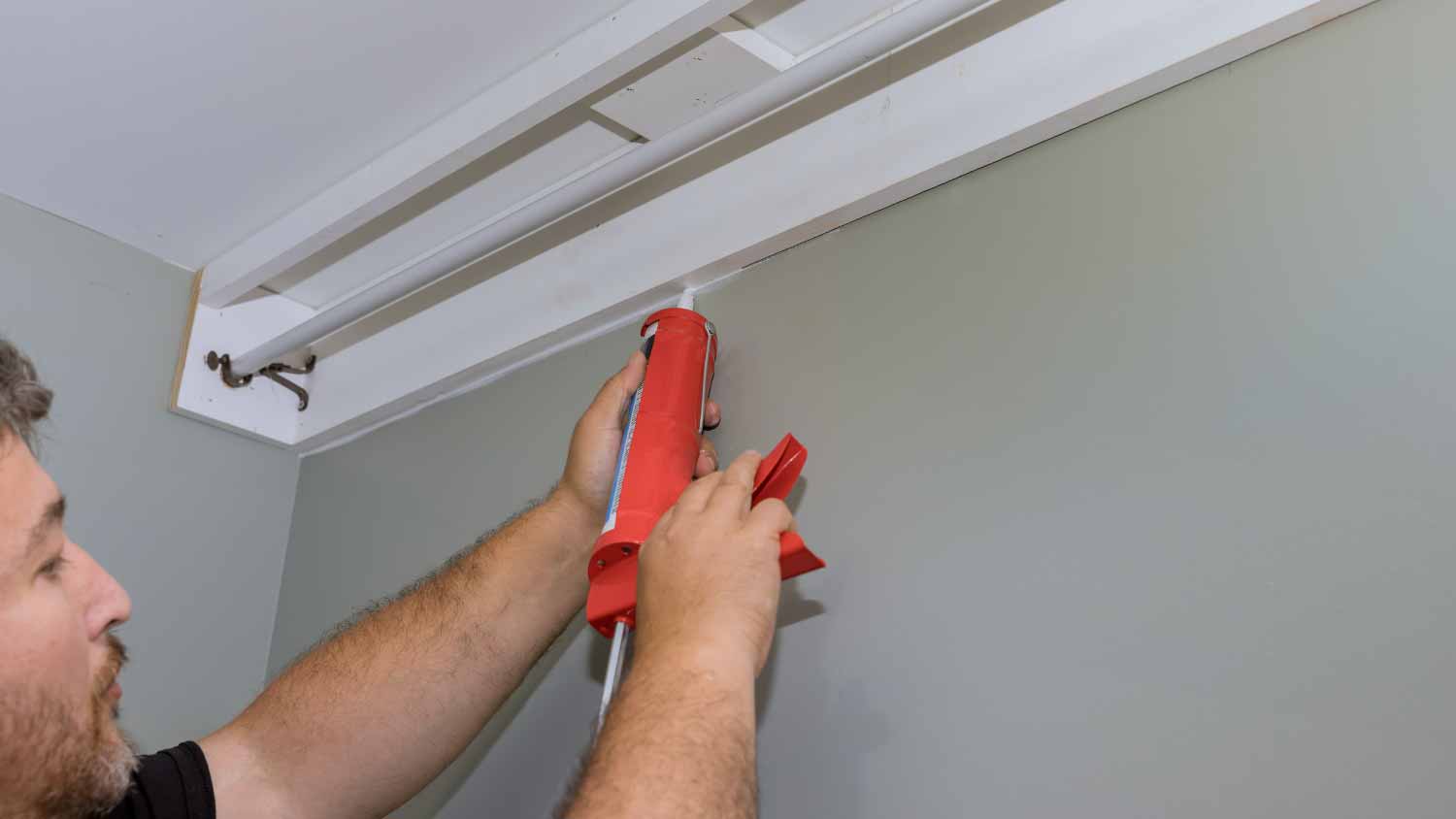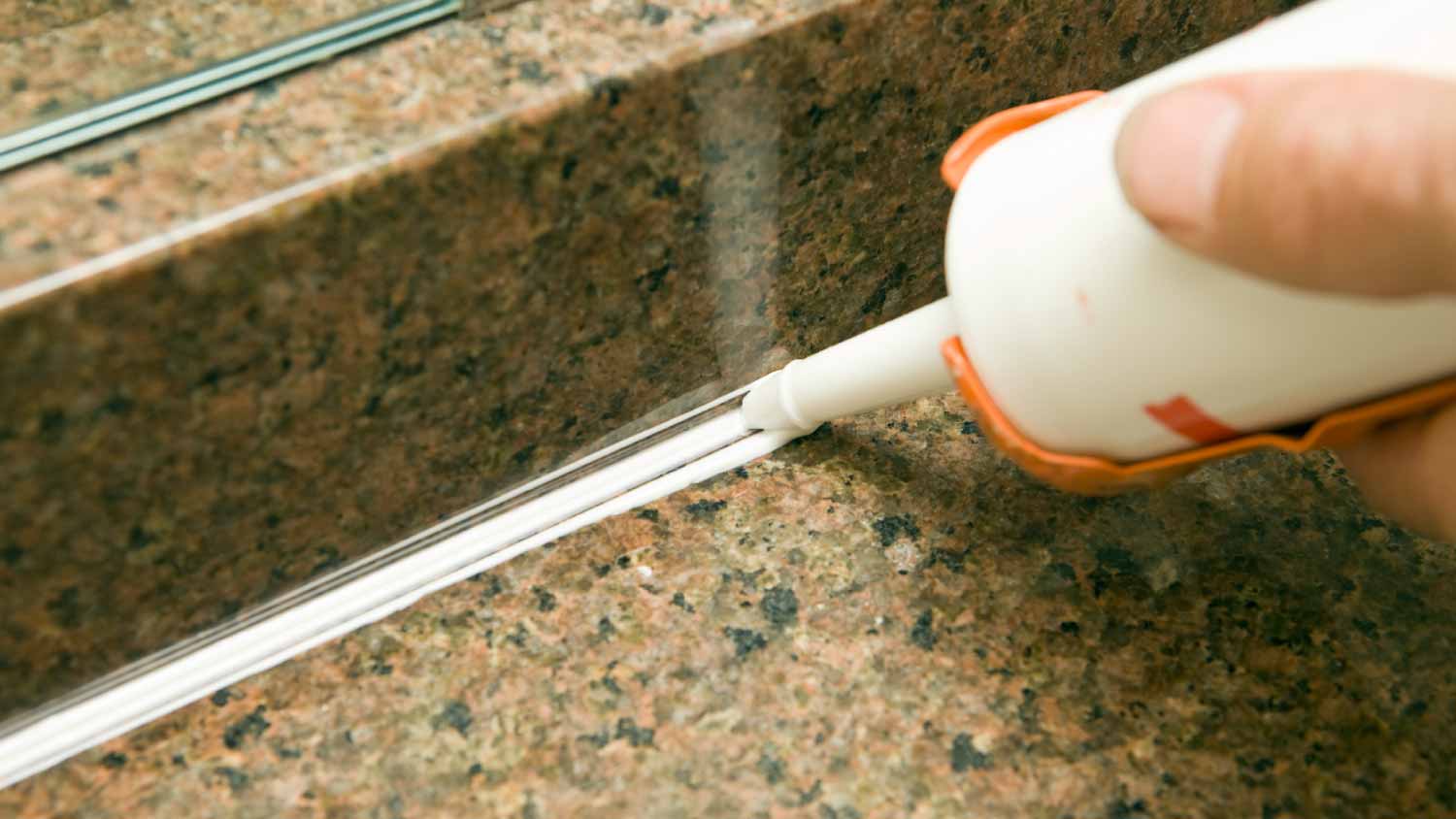
Whether it’s on your floor, walls, or shower, ceramic tile can add style to your space. So, how much does ceramic tile installation cost? Let’s break it down.
Don’t get caulky and use the wrong type for your project


Latex caulk offers a wide variety of color options and can even be painted.
Silicone caulk is waterproof, making it ideal for bathrooms.
Latex caulk can last 10 to 15 years, and silicone caulk can last up to 20 years.
Many people need to replace or refresh caulk every five years.
Latex caulk comes at a lower cost, around $4 to $8 per bottle, whereas silicone caulk costs $8 to $12 per bottle on average.
When it comes to choosing between silicone versus latex caulk for a project, there are several characteristics to consider. If you’re sealing a gap in a wood door frame, you probably want a caulk with a similar color that will blend into the frame. Perhaps you’re just looking to make a quick caulking fix on a tight budget. Or maybe you need a highly waterproof option to seal the tiles around your shower. No matter what you need to caulk or why, keep reading to compare latex and silicone caulks and find which type is right for your project.
One of the biggest differences between latex versus silicone caulk is that silicone caulk is more flexible, waterproof, and longer lasting, but it comes at a higher cost. Latex caulk is better for indoor projects and rooms that don’t get a lot of moisture. Silicone works best for high-moisture areas, like bathrooms and kitchens, and it also works well for outdoor projects. If the look of the caulk matters to you, latex is a better choice because it comes in more color options and can even be painted for a more custom appearance.

Latex caulk, or acrylic latex caulk, is a more rigid yet customizable type of caulk that works well for indoor projects, like sealing doors and windows. Latex caulk is vulnerable to temperature changes and moisture, so it’s not ideal for bathrooms or outdoor projects. A major benefit of latex caulk is that it comes in a variety of colors and can even be painted to blend in or stand out from its surroundings. Latex caulk is also less expensive than silicone caulk.
| Pros | Cons |
|---|---|
| Lower cost | Vulnerable to moisture |
| Variety of colors | Vulnerable to temperature changes |
| Minimal odor | Shorter life span |
Best for:
Interiors of doors and windows
Wood frames
Dry and temperature-stable areas
Latex caulk is popular because it’s a low-cost option that comes in a wide variety of colors. Even if you don’t find the right color for your project, you can still paint over latex caulk to help it blend into the surrounding tile or trim. Plus, applying latex caulk is often easier than handling silicone caulk.
Another benefit of latex caulk is that it releases minimal odors. While you should still properly ventilate a space and put on personal protective equipment before you start caulking, acrylic latex caulk shouldn’t smell as strongly as silicone caulk.
While latex caulk offers a better look and lower cost than silicone caulk, it still comes with major drawbacks. One of its biggest vulnerabilities is water, so you should avoid using latex in bathrooms and outdoor spaces unless you’re willing to re-caulk more frequently.
Latex caulk also tends to shrink and expand when the surrounding air swings from warm to cool and vice versa. This makes latex caulk vulnerable to cracking and other damage, which shortens its life span.

Silicone caulk is your best friend when it comes to sealing bathtubs, showers, kitchen backsplash, plumbing, or other high-moisture areas. This caulk is more flexible, allowing it to better squeeze into grooves and protect against water. Silicone caulk is more expensive, but it also lasts up to twice as long as latex caulk. In addition to being waterproof, silicone caulk also withstands fluctuations in temperature. But keep in mind that this caulk comes in limited color options, often only white or clear.
| Pros | Cons |
|---|---|
| Waterproof | More expensive |
| Longer lasting | Limited colors |
| Withstands temperature changes | Harder to remove |
Best for:
Tubs and showers
Kitchens
Outdoor projects
The biggest benefit of silicone caulk is how durable it is. Whether you need a waterproof caulk to protect your shower tiles or a heat-resistant caulk to seal an outdoor door frame, silicone can withstand water, mildew, temperature fluctuations, and more.
Because of this durability, silicone caulk can last several years. Although you should expect to re-caulk about once every five years, silicone caulk may last up to 20 years with proper application and care.
Silicone caulk’s durability can also be its downfall. While latex is easy to remove with a scraper tool, you’ll need solvents to break down and remove silicone caulk when it’s time to replace it. When you need to re-caulk, you can also expect to spend more on silicone caulk than latex.
Another drawback to silicone caulk is its appearance. It dries into thicker lines, making it more visible. You also can’t paint over silicone caulk like you can with latex, and it often only comes in white or clear.
Latex and silicone caulk can both provide added sealing properties to many areas of your home, but they look and perform differently while also ringing up at different costs. Consider the following major differences between latex and silicone caulks.
If you want your caulk to fade into the background and provide a seamless look, latex might be the best option for you. You can find latex caulk in the classic clear or white colors that you’d expect of caulk, but it also comes in a wide variety of colors, from wood tones to deep greens and blues. Even if you can’t find just the right color of latex caulk to match your tiles, tub surrounds, or wood door frames, this type of caulk is paintable, unlike silicone.
Silicone is extremely durable, making it a good option for a wide variety of projects. The thick, flexible material provides a tight seal against water, and it won’t shrink or crack when temperatures swing from hot to cold and back again.
Caulk costs $1.25 to $4 per linear foot for professional installation. DIY caulking costs $10 to $30 for a caulk gun and other supplies, plus $0.05 to $0.20 per linear foot for the caulk. Either way, latex caulk costs less per bottle than silicone caulk. You can find a 10-ounce bottle of latex caulk for $4 to $8, but a similarly sized bottle of silicone caulk costs $8 to $12.
Latex caulk is popular with homeowners because it’s easier to work with. This type of caulk is easier to control when using a caulk gun, and it’s easier to achieve an even bead of caulk with the latex formula. Silicone, while flexible, can be more challenging to apply yourself, and it can quickly look messy and uneven. For best results, hire a caulking service near you to install silicone or latex caulk for your projects.
Homeowners should expect to re-caulk about every five years, and this process involves removing any worn out, cracked, or otherwise damaged caulk, cleaning the area, then installing fresh caulk. Because silicone caulk requires solvents to fully remove it, it’s harder to remove than latex caulk, which often comes up with just a scraper tool and some elbow grease.
Silicone caulk has an impressively long life span of up to 20 years, even when it’s exposed to water, heat, or cold temperatures. By comparison, latex caulk has a life span of 10 to 15 years, and this can be cut short if the caulk is applied in areas with extreme temperature changes or a lot of moisture, like bathrooms and kitchens.
Neither latex nor silicone caulks are considered eco-friendly in terms of materials, but for eco-conscious homeowners, there are some ways to caulk more sustainably. Look for caulk products with UL Greenguard Gold Certification, whose emissions limits have been used by the U.S. Environmental Protection Agency, on the label. If you’re considering silicone caulk for your projects, look for solvent-free varieties. You can also reduce the amount of off-gassing from caulk products by opening windows and properly ventilating the project area before you start working with caulk.
Remember, caulking can help seal troublesome gaps that allow in drafts. By caulking, you can help improve your home’s energy efficiency.
They fixed my garage door really quickly and didn’t charge a fortune. The team was super friendly and knew exactly what they were doing.
Hugo is a really good handyman and is great for the price, Very cheap and Reliable work i would 100% recommend Hugo for any projects needed.
Customer service is excellent at every level. Let me give you an example: I had a coordinator and four team members. And they listened to all my instructions. Highly recommended!!
Very professional and polite. Kept me informed about everything they were doing. Reviewed everything they did and answered all my questions. Cleaned up before leaving.
Joe responded to my request for a quote in just a few minutes, kept me informed about when he'd cut my grass during a rainy week, and did a great job mowing and trimming my lawn. Very reasonable priced!
This is the second time we have used them. The first time (in March 2015), they were hired to do a deep clean of my home. They came on time, were very professional and did the most complete cleaning I have ever seen. They cleaned the floors (wood and tile), blinds, inside the refrigerator...
The first day of the project Mr. Morris met My Wife and I, at Home Depot to select the tile and material needed for the project. The first day of scheduled work on the Project Mr. Morris was approximately 20 minutes due to traffic, he called ahead of time and notified me. Mr. Morris was on...
From average costs to expert advice, get all the answers you need to get your job done.

Whether it’s on your floor, walls, or shower, ceramic tile can add style to your space. So, how much does ceramic tile installation cost? Let’s break it down.

You're planning a bathroom remodel, but how much will it cost to retile your bathroom? Read this guide to find out.

Tile varies dramatically in price, but there’s something for every budget. This guide will help you plan for tile installation costs, no matter the project.

Tackling a tiling project can be challenging if you don’t have the right tools to work with. Here are the essential tiling tools you’ll need for your next DIY.

You don’t have to stick with traditional tile for your backsplash. Learn about unique and affordable backsplash alternatives to beautify and protect your kitchen.

Choosing the best grout for kitchen backsplashes depends on your priorities and backsplash design. Learn how to choose the best grout for your backsplash.